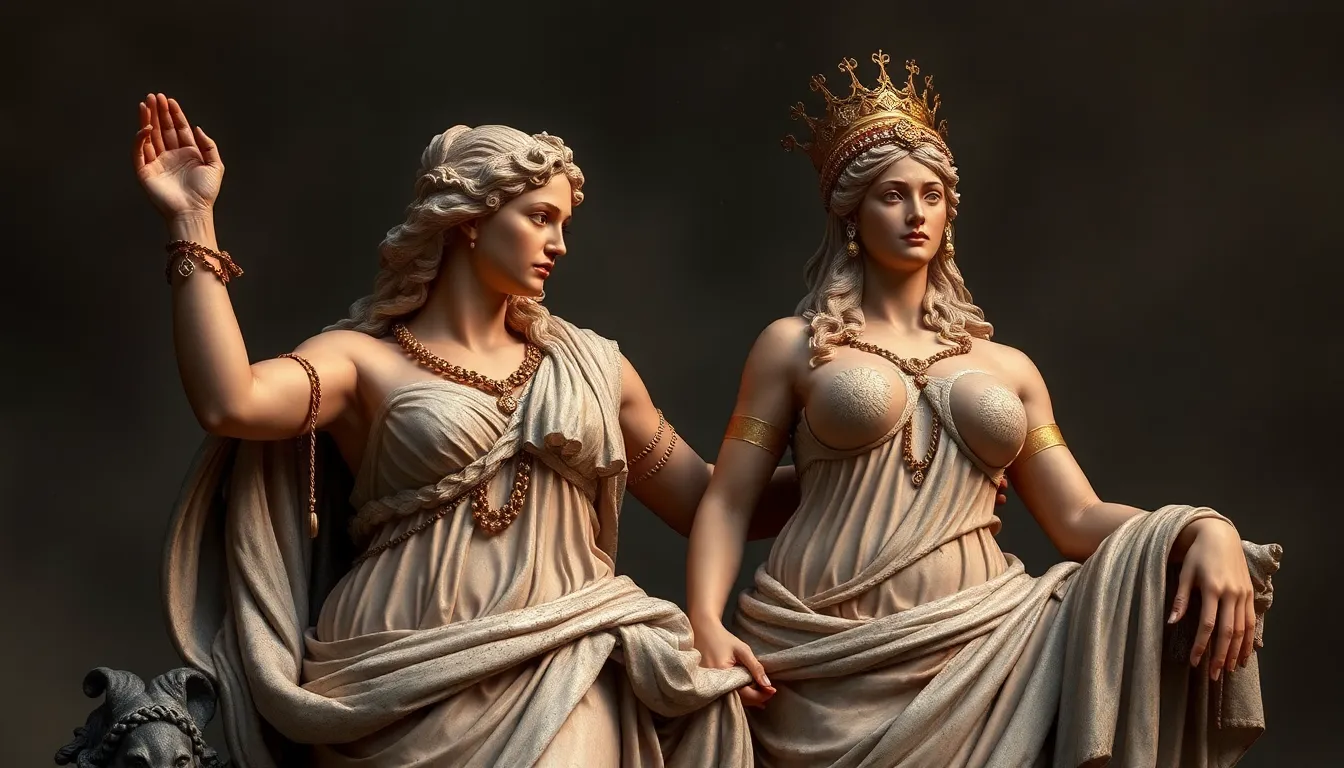The Most Influential Mortal Women in Greek Mythology
I. Introduction
Greek mythology is a rich tapestry of stories that have shaped Western literature, art, and culture for centuries. It encompasses a vast array of deities, heroes, and mortals, each with their own narratives and significance. Among these figures, mortal women have played pivotal roles in the myths and legends, often serving as catalysts for action and moral lessons.
This article highlights some of the most influential mortal women in Greek mythology, exploring their unique stories and the impact they had on the cultural and societal norms of their time.
II. Penelope: The Loyal Wife
Penelope, the wife of Odysseus, is one of the most celebrated female figures in Greek mythology. Her story is primarily told in Homer’s “Odyssey,” where she is depicted as the epitome of loyalty and fidelity.
During Odysseus’s long absence from Ithaca, Penelope faced numerous challenges. With suitors vying for her hand, she cleverly devised a plan to delay remarrying:
- She promised to choose a suitor once she finished weaving a tapestry.
- Each night, she would unravel part of the tapestry, effectively stalling her decision.
Penelope’s cunning and resourcefulness not only preserved her marriage but also protected her household. As a symbol of loyalty, she represents the ideal of marital fidelity in a time of chaos.
III. Medea: The Complex Anti-Heroine
Medea, a figure from Greek mythology, is often seen as a complex anti-heroine. Originating from Colchis, she was a powerful sorceress and the granddaughter of the sun god Helios. Her relationship with Jason, the leader of the Argonauts, is central to her narrative.
The themes of love, betrayal, and vengeance permeate Medea’s story:
- She fell deeply in love with Jason, assisting him in his quests.
- When Jason abandoned her for another woman, Medea’s heartbreak transformed into rage.
- In an act of revenge, she killed Jason’s new bride and her own children.
Medea’s story has influenced various interpretations of female power and agency, showcasing the depths of human emotion and the consequences of betrayal.
IV. Helen of Troy: The Face That Launched a Thousand Ships
Helen of Troy is perhaps one of the most famous women in Greek mythology. Her beauty was said to be unparalleled, and her abduction by Paris sparked the Trojan War, a pivotal event in Greek myth.
The myth of Helen explores themes of beauty, desire, and the consequences of choice:
- Her face inspired countless men and led to the greatest conflict among Greeks and Trojans.
- Helen’s story raises questions about agency and victimhood, as she is often portrayed as both a prize and a pawn.
Helen’s legacy endures in art and literature, symbolizing the complexities of desire and the tragic outcomes of war.
V. Clytemnestra: The Avenger of Agamemnon
Clytemnestra, the wife of Agamemnon, is a figure steeped in themes of revenge and justice. Her story is primarily told in Aeschylus’s “Oresteia,” where she is portrayed as a powerful and vengeful woman.
After Agamemnon sacrifices their daughter, Iphigenia, Clytemnestra’s motivations for revenge become clear:
- She plots Agamemnon’s murder upon his return from the Trojan War.
- Clytemnestra’s actions challenge the traditional roles of women in her society, showcasing her strength and resolve.
Clytemnestra’s impact on the portrayal of women in power has resonated throughout history, inspiring discussions about female agency and vengeance.
VI. Ariadne: The Helper and Betrayed Lover
Ariadne is a fascinating figure in Greek mythology, known for her role in the myth of Theseus and the Minotaur. She is the daughter of King Minos of Crete and played a crucial part in the hero’s quest.
Ariadne’s contributions to the myth include:
- Providing Theseus with a ball of thread to navigate the labyrinth.
- Helping him defeat the Minotaur, thus saving the other Athenian youths.
However, her story takes a tragic turn when Theseus abandons her on the island of Naxos. Ariadne’s legacy is one of sacrifice and betrayal, highlighting the complexities of love and loyalty.
VII. Atalanta: The Hunter and Warrior
Atalanta is one of the most iconic female figures in Greek mythology, known for her skills as a huntress and warrior. She defied traditional gender roles and sought independence in a male-dominated world.
Her story is characterized by her remarkable feats:
- She played a key role in the hunt for the Calydonian Boar, showcasing her bravery and skill.
- Atalanta famously raced potential suitors, declaring that she would only marry the man who could defeat her.
Atalanta represents strength and empowerment, serving as a symbol of female independence and defiance against societal expectations.
VIII. Conclusion
The influential mortal women discussed in this article—Penelope, Medea, Helen of Troy, Clytemnestra, Ariadne, and Atalanta—each contributed uniquely to the rich tapestry of Greek mythology. Their stories reflect the complexities of human emotion, the struggles for agency, and the impact of loyalty and betrayal.
These women continue to resonate in contemporary culture, serving as symbols of strength, resilience, and the enduring significance of women’s roles in ancient narratives. As we explore these myths, we gain a deeper understanding of the multifaceted nature of femininity and the powerful legacies these characters leave behind.




